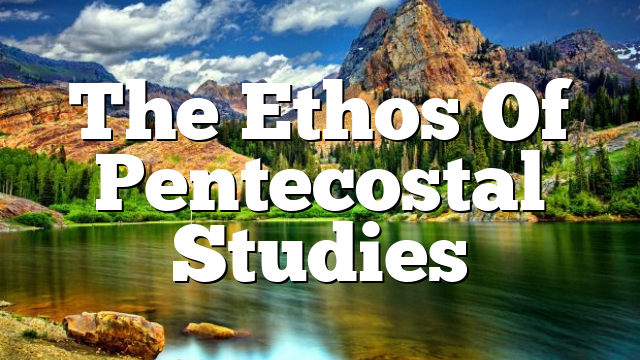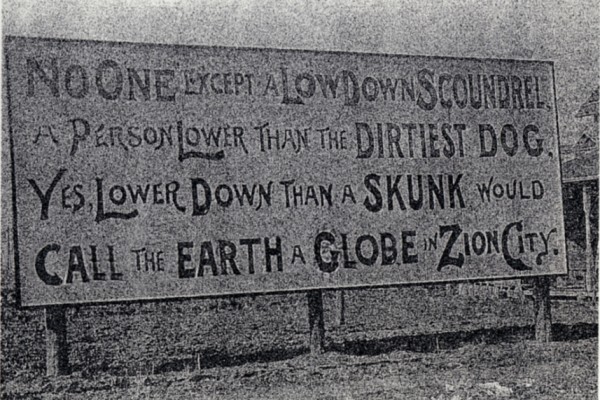Click to join the conversation with over 500,000 Pentecostal believers and scholars
Click to get our FREE MOBILE APP and stay connected
| PentecostalTheology.com



PNEUMA 39 (2017) 261–263
The Ethos of Pentecostal Theology
Pneumais the official Pentecostal Theology—but what exactly are “Pentecostal Theology”? The adjective pentecostal, when used in the title of the society, is shorthand for a variety of beliefs, practices, and scholarly disciplines found within the global expressions of pentecostal and charismatic Christianity, inclusive of classical pentecostal churches, the charismatic move- ment, and nonwhite indigenous churches worldwide. When describing the ori- gins and developments of Pentecostalism, Walter Hollenweger identified five roots that constitute the history and identity of the movement:1 (1) the black oral root embodied by William J. Seymour, (2) the Catholic root from which the movement imported spiritual elements, (3) the evangelical root, which was inspired by the American Holiness Movement along with its social and politi- cal interpretation of holiness,2 (4) the critical root, which from its origins has provided a contextualized theology, and (5) the ecumenical root, expressed in the renewal movements within Catholicism and the mainline denomina- tions.
The critical root best describes the purpose and work of the Society for Pentecostal Theology andPneuma. This critical tradition, which includes numer- ous other journals and academic societies, is both multidisciplinary and con- textual. The interest groups of the Society for Pentecostal Theology span the disciplines of biblical studies, history, theology, ethics, missions, philosophy, ecumenism, diversity, and religion and culture. Researchers of Pentecostalism, who may or may not identify with the tradition, employ a variety of methodolo- gies, and their scholarship acknowledges a distinct pentecostal identity, loca- tion, or perspective. Pentecostal Theology are more akin to the contextual theolo-
1 Walter J. Hollenweger, Pentecostalism: Origins and Developments Worldwide (Peabody, ma:
Hendrickson, 1997).
2 The evangelical root of Pentecostalism is distinguishable from both Fundamentalism and
Evangelicalism. See Russell Spittler, “Are Pentecostals and Charismatics Fundamentalists?
A Review of American Uses of These Catagories,” in Karla Poewe, ed., Charismatic Chris-
tianity in a Global Culture (Columbia, sc: University of South Carolina Press, 1994), 103–116.
Cecil M. Robeck Jr., “National Association of Evangelicals,” in Stanley M. Burgess and Gary
B. McGee, eds.,Dictionary of Pentecostal and Charismatic Movements(Grand Rapids,mi: Zon-
dervan, 1988), 634–636.
© koninklijke brill nv, leiden, 2017 | doi: 10.1163/15700747-03903026
1
262
waddell and althouse
gies of race, gender, and geography than to the scholarly theologies that assume neutrality and make claims of so-called universal statements and propositions. In addition to being multidisciplinary and contextual, Pentecostal Theology are at times descriptive of pentecostal beliefs and practices and at other times pre- scriptive, offering an alternative way to think and behave. The articles in this issue contribute to Pentecostal Theology in these ways.
Casey S. Cole opens her article with a testimony of her experience teaching biblical studies at a pentecostal university. When asked “Why read the Bible?” her students respond with three common answers: (1) to know what to believe, (2) to know how to behave, and (3) for personal comfort. She proceeds to read them the narrative of the rape of Tamar in 2Samuel, a story that fails to provide comfort or assistance regarding what to believe or do. Drawing on the hermeneutical work of other pentecostals, Cole recommends an orthopathic hermeneutic that asks a different question: “How does this text make us feel?” This question enables the readers to engage the troubling text in new ways. Ratherthangaininginformation,thereaderexperiencesthegrief of Tamarand, Cole adds, the grief of the Spirit, which in turn inspires the reader to live with the compassion of Jesus.
The next two articles deal with ethnic/racial divisions found in the encounter between Peter and Cornelius in Acts 10. This passage has received a lot of attention in pentecostal scholarship because it is one of the few refer- ences in Acts to glossolalia. These articles raise different questions, however. Rodolfo Galvan Estradaiiiasks how this text can shape a Christian response to foreigners. Estrada examines the Greco-Roman view mentioned by Diodorus of Sicily and Tacitus that Jews were believed to be “haters of humanity” due to their unwillingness to associate with foreigners. He proposes that the divine activity in the text (that is, Spirit baptism and glossolalia) should be understood in this cultural context as the overcoming of ethno-racial divisions.
Michael J. Frost raises questions about ethnicity and cultural identity in the book of Acts vis-à-vis the Māori in New Zealand. Focusing on the story of Pen- tecost and the story of Cornelius, he makes a compelling argument that the empowerment of the Spirit in Acts includes an affirmation of ethnic and cul- tural identity. Frost brings this discussion to bear on the story of the Māori, an indigenous people group who have suffered the effects of colonization and who have a mixed relationship with pentecostal evangelistic efforts that have tended uncritically to affirm negative stereotypes of the Māori. In order to investigate this situation Frost conducted a series of interviews with Māori pentecostal church leaders. He identified within the Māori testimonies con- nections between divine affirmation of cultural identity and their pentecostal experiences.
PNEUMA 39 (2017) 261–263
2
the ethos of Pentecostal Theology
263
One expression of pentecostal and charismatic Christianity is the prosperity gospel—the idea that God intends for all Christians to experience health and wealth in abundance. In the usa, this message of Christian exceptionalism is often dovetailed with a version of American exceptionalism that contributes to a civil religion. The next article, by Peter Mundey, offers a sociological analysis of the connection between consumerist capitalism and the prosperity gospel of Joel Osteen, a well-known pastor and televangelist. Mundey surveys Osteen’s New York Timesbestselling books and identifies connections between Osteen’s theology of money and abundance, consumerism capitalism, and the American Dream.
In the final article of this issue, Robert P. Menzies addresses a mainstay in Pentecostal Theology—Spirit baptism. Elsewhere Menzies has already con- tributed significantly to the discussion, arguing that the empowerment of the Spirit in Luke–Acts is theologically distinct from, and usually subsequent to, the gift of the Spirit received at conversion.3 In this article, Menzies surveys the debate against subsequence in Paul but finds it unconvincing. Then he reexamines the Pauline corpus and makes a case that Paul and Luke are not in contradiction regarding the subsequent bestowal of the Spirit for empower- ment for ministry.
Drawing back for a moment, one realizes that pentecostal theology and scholarship is a contextual endeavor that makes pentecostalism uniquely pen- tecostal.Whether shaped by hermeneutical questions of interpretation and the way in which pentecostals construct their theological concerns, or particular- ized by geographic, linguistic, and cultural issues in which beliefs and practices are encultured in and accommodated to its cultural environment, pentecostal- ism is an important Christian development and requires critical evaluation.
As the editors of Pneuma, we would like to thank the anonymous peer reviewers for their constructive comments on the articles in this issue.
Robby Waddell and Peter Althouse
3 Robert P. Menzies, Empowered for Witness: The Spirit in Luke-Acts (Sheffield, uk: Sheffield
Academic Press, 1994).
PNEUMA 39 (2017) 261–263
3


